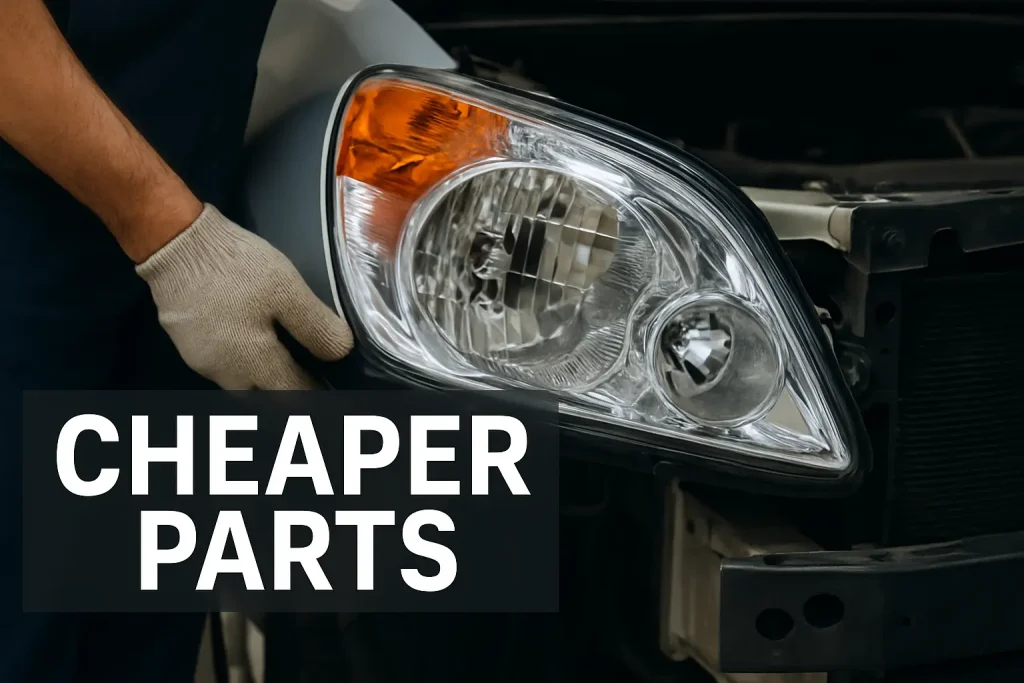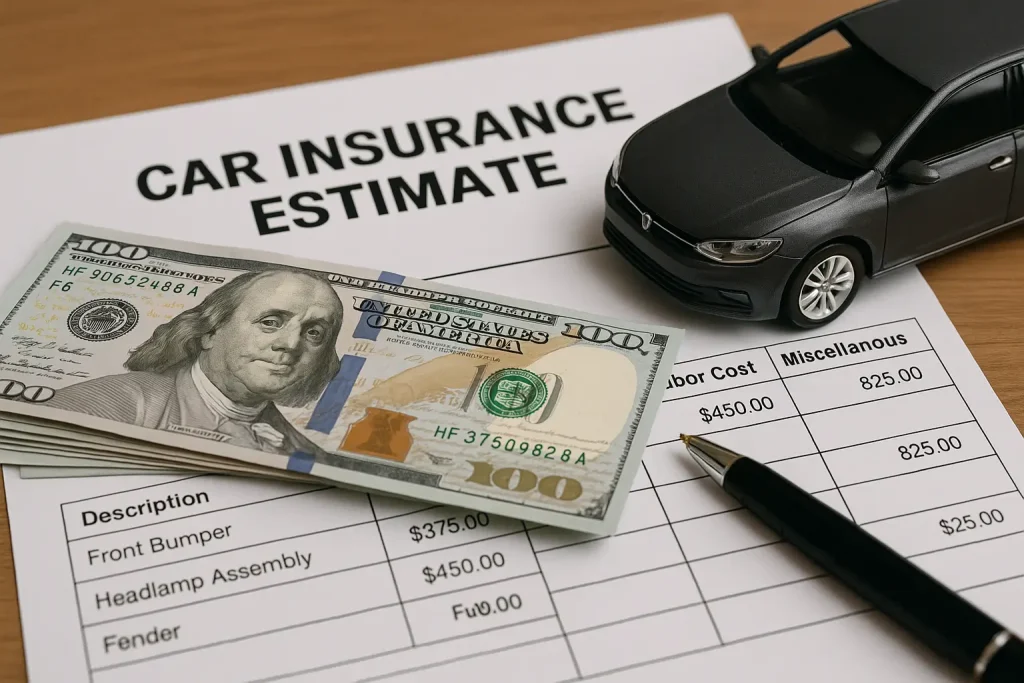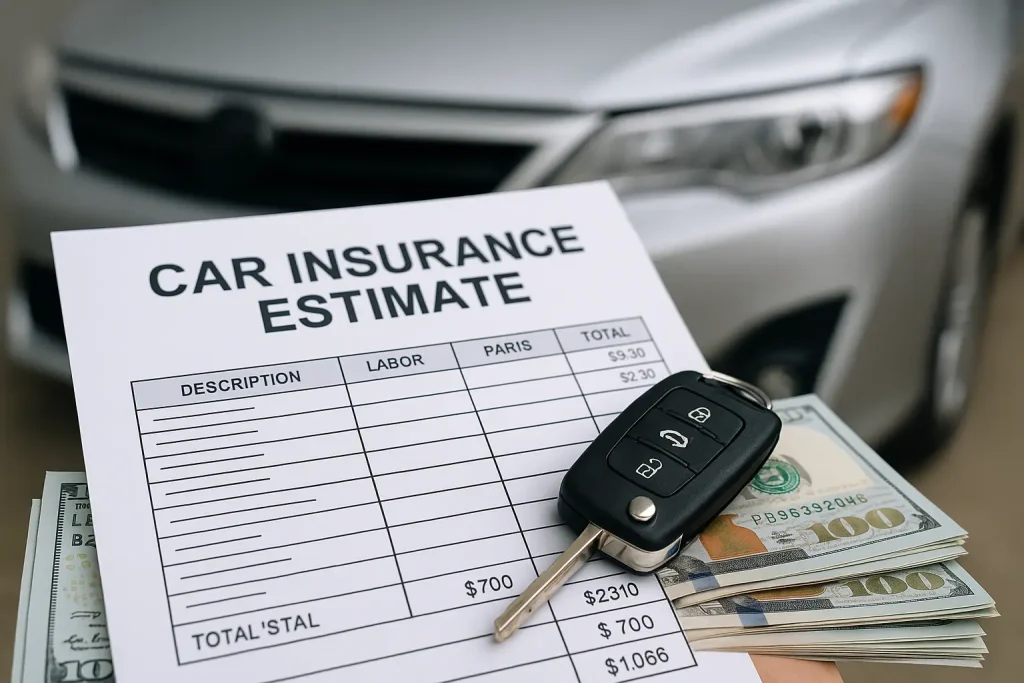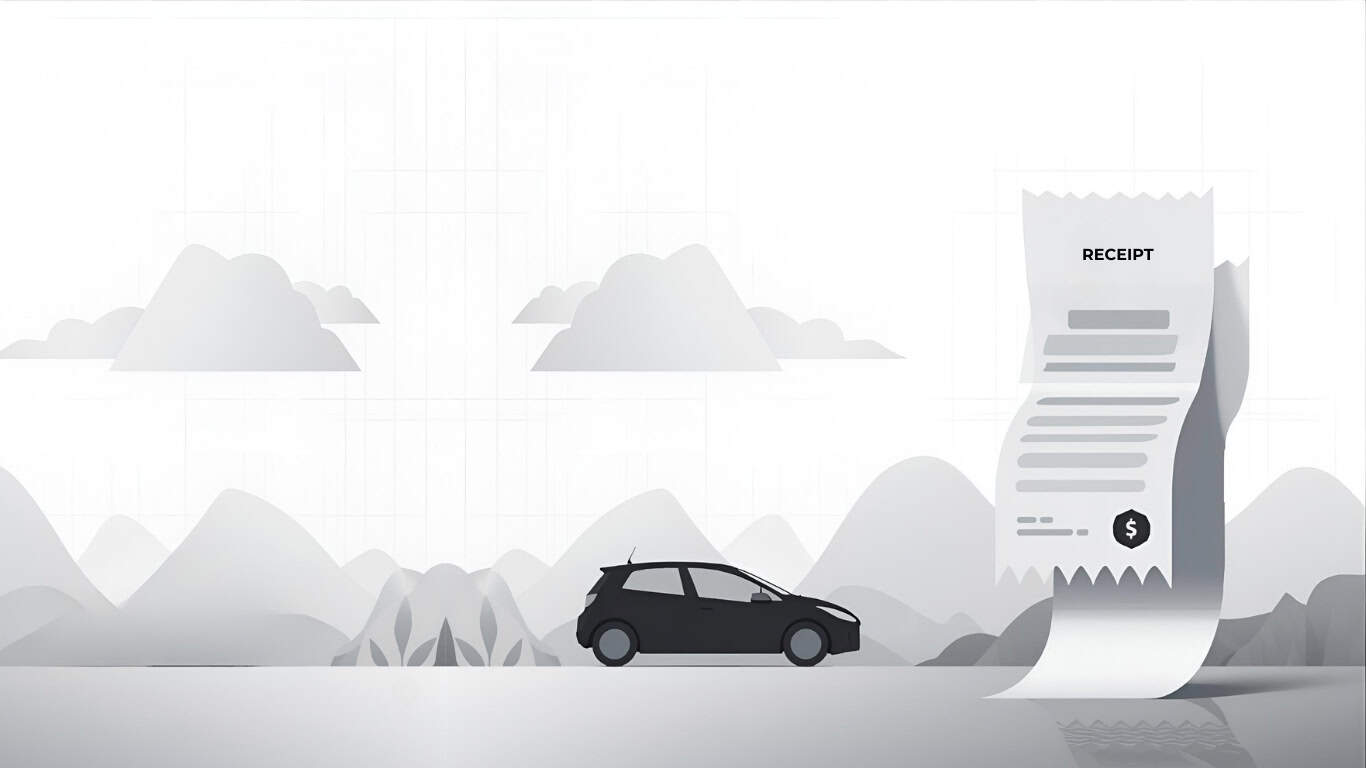When you file an auto claim, one of the first things you’ll see from the insurance company is a car insurance estimate. This document outlines what the insurer believes it will cost to repair your vehicle after an accident. On the surface, it might seem like a neutral calculation, but it can have a major impact on how much money you receive — and whether that payout is enough to cover your actual repair costs.
In this article, we’ll explain how a car insurance estimate is created, the common tactics that can reduce its total, and what steps you can take to make sure it reflects the true cost of repairs. By the end, you’ll know how to read one critically, spot potential underpricing, and challenge it if needed.
What Is a Car Insurance Estimate?
A car insurance estimate is an itemized calculation of repair costs, prepared either by an insurance adjuster or a repair facility. It typically includes:
- Labor hours and rates for each repair task
- Parts required (OEM, aftermarket, or salvage)
- Paint and materials costs
- Miscellaneous fees (towing, storage, etc.)
While it’s presented as the insurer’s best assessment, it’s important to remember that this is the company’s version of what the repairs should cost — and it’s often shaped by internal cost-control guidelines.
How Insurance Companies Create Repair Estimates
| Tactic | Example Impact ($) | Description |
|---|---|---|
| Using Lower Labor Rates | -450 | Using rates from low-cost or uncertified shops to reduce labor charges. |
| Choosing Cheaper Parts | -300 | Specifying aftermarket or salvage parts instead of OEM parts. |
| Omitting Certain Procedures | -250 | Leaving out necessary steps like calibration or corrosion protection. |
| Applying Betterment or Depreciation | -150 | Reducing payout for ‘improvements’ like new tires or parts. |
When preparing a car insurance estimate, adjusters use industry-standard software like CCC One, Mitchell, or Audatex. These tools pull from databases of labor times, parts pricing, and standard procedures. However, there’s flexibility in how the numbers are entered — and that’s where costs can be adjusted down.
Typical steps in the estimate process:
- Damage inspection – Visual assessment and photos of the vehicle.
- Labor time selection – Choosing the number of hours each task should take.
- Parts sourcing – Deciding between OEM, aftermarket, or used parts.
- Procedure selection – Including or excluding steps like calibration or corrosion protection.
- Cost calculation – Software generates the total, which the adjuster reviews and approves.
Common Ways a Car Insurance Estimate Reduces Payouts
While not every estimate is intentionally low, certain patterns in how they’re prepared can lead to smaller settlement offers. Understanding these tactics helps you identify when a car insurance estimate doesn’t match real-world repair costs.
Lower Labor Rates
Labor makes up a large portion of most repair bills, especially after significant collisions. Adjusters sometimes reference rates from smaller, less-equipped shops that charge far less than certified collision centers.
For example, a high-quality shop in your area might charge $70–$80 per hour for body work because they have manufacturer certifications, specialized tools, and trained technicians. The adjuster may base their calculation on a $50/hour rate pulled from a discount shop. Over 30–40 labor hours, that $20–$30 difference per hour can reduce the estimate by $600–$1,200. On paper it looks reasonable, but it’s often far below what reputable shops actually charge.
Cheaper Parts

Parts selection is another major area where estimates are reduced. Instead of listing OEM (Original Equipment Manufacturer) parts, which are made to the exact specifications of your car, the estimate might call for aftermarket, salvage, or “reconditioned” components.
These parts can cost 20–50% less, which is appealing to insurers, but they may not fit perfectly or perform the same. For instance, an aftermarket bumper may lack correct mounting points for factory sensors, leading to misaligned safety features. While the insurer saves money, you may face additional repairs later or compromise on quality.
Missing Procedures
A repair estimate may leave out certain steps entirely, which lowers the total even more. Common omissions include calibrating advanced driver assistance systems (ADAS), performing corrosion protection on bare metal, or blend painting adjacent panels so the new paint matches correctly.
These steps are often required by vehicle manufacturers for a safe and lasting repair. If they’re skipped in the estimate, the repair shop will either request a supplement (delaying the process) or you might have to cover the cost yourself. These procedures can add hundreds of dollars — or more — to the real repair bill.
Depreciation or “Betterment” Deductions
If a repair involves replacing an older part with a brand-new one, insurers may apply a “betterment” deduction, arguing that your car’s value is now higher than before the accident.
This is common with wear items like tires, batteries, or upholstery. For example, if your tires were 50% worn and the repair requires replacing all four, the insurer may only cover half the tire cost. While some level of depreciation can be legitimate, it’s sometimes applied to parts that shouldn’t be depreciated at all, like safety systems or body panels, which don’t “wear out” in the same way.
Why the Estimate Matters
The car insurance estimate often serves as the ceiling for your payout. If it’s too low, you may struggle to get your car repaired to its pre-accident condition without paying out of pocket. Small adjustments across labor, parts, and procedures can quickly add up to hundreds or even thousands of dollars in reduced settlement value.
How to Challenge a Low Car Insurance Estimate
If you believe your estimate doesn’t reflect real repair costs, you have options:
- Get a second opinion from a trusted repair shop.
- Compare labor rates with local industry averages.
- Request OEM parts if they’re safer or manufacturer-recommended.
- Provide documentation from the manufacturer’s repair guidelines.
- Escalate through the appraisal clause in your policy if needed.
Legal Protections for Policyholders
Many states have rules that protect drivers from unfair estimating practices. These may include requirements for OEM parts under certain conditions, or the right to choose your own repair shop. Understanding your rights can help you push back when an estimate seems unreasonably low.
Final Takeaway – Understanding Your Car Insurance Estimate

A car insurance estimate is more than a repair cost sheet — it’s a powerful tool that shapes how much you’ll receive in a settlement. Knowing how it’s built, where it can be manipulated, and how to dispute it can make the difference between a payout that falls short and one that truly covers your losses.
If your estimate looks low, don’t accept it without question. Request clarifications, gather evidence, and be prepared to challenge it. A fair, accurate estimate is the first step toward a fair, accurate payout.





